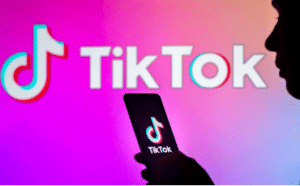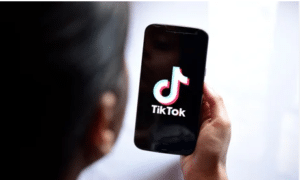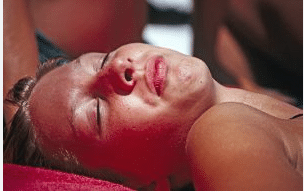KEYWORDS
TikTok sunburning trend, skin cancer risk, melanoma prevention, UV protection, sunburn dangers, Queen Victoria Hospital, Cancer Research UK, sunscreen safety, viral social media trends, health risks of sunburning.
- EAST GRINSTEAD, UK
- Health experts are warning against a dangerous TikTok trend known as “sunburning,” which they say could significantly increase the risk of developing skin cancer. The Queen Victoria Hospital Foundation Trust in East Grinstead has issued an urgent advisory, cautioning the public about this alarming practice encouraged by social media influencers.
What is the ‘Sunburning’ Trend?
The “sunburning” trend involves deliberately avoiding sunscreen or even intentionally burning the skin under the belief that it provides a “healthy boost” or cures skin conditions like acne. However, medical professionals are adamant that this behavior poses serious health risks.
Severe Health Risks of Sunburning
Sam Orkar, the clinical director of plastics and burns services at Queen Victoria Hospital, expressed deep concern over the trend. “Trends such as this not only pose an immediate danger but have the potential to cause lifelong health issues,” said Orkar. He urged the public to protect their skin with sunscreen and to seek safer, proven treatments for skin concerns.
While no cases directly related to the “sunburning” trend have been reported at the hospital yet, experts warn that the long-term consequences could be devastating. Repeated exposure to sunburn significantly increases the risk of developing skin cancer, particularly melanoma, and accelerates the aging process of the skin.
Rising Skin Cancer Cases in the UK
The Queen Victoria Hospital currently treats approximately 700 skin cancer patients annually from Sussex, Surrey, and Kent, with numbers steadily rising each year. Melanoma, a deadly form of skin cancer, is now the fifth most common type of cancer in the UK. According to Cancer Research UK, there could be a record 20,800 new melanoma cases diagnosed this year, up from an average of 19,300 cases per year between 2020 and 2022.
TikTok Under Scrutiny
TikTok, the platform where this trend has gained traction, has been approached for comment on the issue. The rise of harmful social media trends like “sunburning” highlights the urgent need for greater awareness and education about skin health and cancer prevention.
Protect Your Skin: Expert Advice
Healthcare professionals strongly advise against following dangerous social media trends and emphasize the importance of using sunscreen to protect against UV damage. They also recommend seeking scientifically-backed treatments for skin conditions rather than risking serious health problems with unproven methods . - TIKTOK and the spread of dangerous trend
- TikTok, where the “sunburning” trend has been spreading, has been approached for comment. The platform’s role in promoting risky behaviors underscores the urgent need for greater awareness about the dangers of unprotected sun exposure and the critical importance of skin cancer prevention.

Skin Cancer Statistics Globally and in the UK:
-
- According to the World Health Organization (WHO), between 2 and 3 million non-melanoma skin cancers and 132,000 melanoma skin cancers occur globally each year.
- In the UK, melanoma accounts for around 4% of all new cancer cases, with approximately 16,000 new melanoma skin cancer cases diagnosed every year, according to Cancer Research UK.
- Over the past decade, melanoma incidence rates have increased by 50% in the UK, highlighting the growing concern over UV exposure.
- Impact of UV Radiation:
- The primary cause of skin cancer is exposure to ultraviolet (UV) radiation, which can come from the sun or artificial sources like tanning beds. The UV Index, a scale used to measure the intensity of UV radiation, varies throughout the year, with higher values indicating a greater risk of harm from unprotected sun exposure.
UV radiation can damage the DNA in skin cells, which can lead to mutations and, ultimately, skin cancer. Even a single blistering sunburn in childhood or adolescence can more than double a person’s chances of developing melanoma later in life.
TikTok’s Role in Promoting Risky Behaviors:
-
-
- TikTok, with over 1 billion active users globally, has a significant influence, particularly among younger audiences. Trends on the platform can quickly go viral, reaching millions of people within ashort time. This influence underscores the need for social media platforms to monitor and regulate harmful content that couldencourage dangerous behaviors like “sunburning.”
- Past instances of harmful trends on TikTok have led to serious injuries and health risks, prompting calls for better contenmoderation and education on safe practices.
- 4. Sunscreen Use and Public Awareness:
Despite the known risks, studies have shown that many people do not use sunscreen consistently. According to a survey by the American Academy of Dermatology, only 14% of men and 30% of women in the U.S. use sunscreen on their face and other exposed skin areas regularly.- Public health campaigns emphasize the importance of using a broad-spectrum sunscreen with an SPF of 30 or higher, reapplying it every two hours, and seeking shade during peak sunlight hours (10 AM to 4 PM).
-
-
Psychological Impact of Social Media Trends:
The desire to fit in or follow trends on social media can lead individuals to engage in risky behaviors, often without fully understanding the potential consequences. The psychology behind viral trends reveals that peer influence and the fear of missing out (FOMO) play significant roles in why people might engage in something as dangerous as “sunburning.”

-
- Dermatologist Insights: Dr. Rachel Nazarian, a board-certified dermatologist, notes that “sunburn is never safe. There is no such thing as a healthy tan—when your skin changes color, it’s a sign of damage.” She emphasizes the importance of wearing protective clothing, using sunscreen, and avoiding peak sun exposure.
Public Health Campaigns:
- The British Association of Dermatologists (BAD) runs annual Sun Awareness campaigns, which educate the public on the dangers of sunburn and the importance of skin cancer prevention. Their messages encourage people to “Slip on a shirt, Slop on sunscreen, and Slap on a hat” to protect against UV radiation.
- Dermatologist Insights: Dr. Rachel Nazarian, a board-certified dermatologist, notes that “sunburn is never safe. There is no such thing as a healthy tan—when your skin changes color, it’s a sign of damage.” She emphasizes the importance of wearing protective clothing, using sunscreen, and avoiding peak sun exposure.





